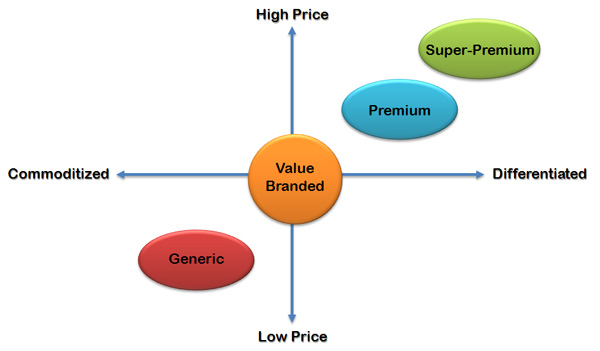Pricing Is a Big Deal
Whether you’re marketing a product or service, one of the major determining factors in the success of your company or brand is going to be the price you are able to command and the corresponding impact on your profitability. Basically, your pricing must be structured in such a way that it reflects both your internal requirements and the external needs and expectations of your customers. Set your prices too high and you won’t sell enough. Set them too low and you may sell plenty but go broke in the process.
Establish a Sound Pricing Strategy
The good news is that pricing isn’t set in stone. If you establish a reliable process to manage pricing, you can maintain a fluid and effective pricing model that allows you to maintain profitability while reacting to market pressures. It’s also important to remember that pricing isn’t an all or nothing game. Here are a few key points to consider as you develop your pricing model.
 For different products and services, you can implement different pricing tactics.
For different products and services, you can implement different pricing tactics.- Your pricing tactics can be based on the different roles of each product or service within your total portfolio.
- Entirely different pricing tactics can be effectively combined within an overall pricing strategy.
Stake Out a Realistic Position
Choosing the right price positioning is very easy to say but not nearly as easy to do. You must have a realistic view on the value of your products and services as well as a pretty good understanding of your industry and the competitive landscape. It is absolutely essential that you take an objective view and not be influenced by internal desires. Here are a five of the most important factors you’ll want to consider as you work through your pricing process.
Top 5 Pricing Factors
 Capacity – Based on your internal infrastructure, what level of volume can you effectively manage and what level of profitability must it deliver?
Capacity – Based on your internal infrastructure, what level of volume can you effectively manage and what level of profitability must it deliver?- Differentiation – What level of pricing can you reasonably expect based on the attributes of your products and services?
- Competition – What offerings does your competition have and how does their pricing structure align or conflict with your plans?
- Market Trends – At what level of the pricing matrix are there opportunities for success based on your offering capabilities?
- Economic Trends – What level of customer / consumer dollars are available based on current economic factors?
Balance Your Portfolio
If possible, you should try to have appropriate representation of products and services within each price tier that you plan to compete. Clearly this will be somewhat dependent on the size of your organization and the resources you can bring to bear. At the very least, you should try to have offerings in at least two price tiers so you can adjust to market conditions and not have all your eggs in one basket.
Don’t Try to Be the Lowest
Finally, regardless of your resources or capabilities, we never recommend any sort of pricing strategy that involves any long-term pursuit of being at, or very near, the lowest price in the marketplace. Unless you’re the very largest and most efficient company or brand in your industry, this is impossible to achieve with any degree of financial success. Even if you are the largest and most efficient, it’s still a bad idea because it limits your profit potential and will virtually guarantee you won’t be the largest for long.
